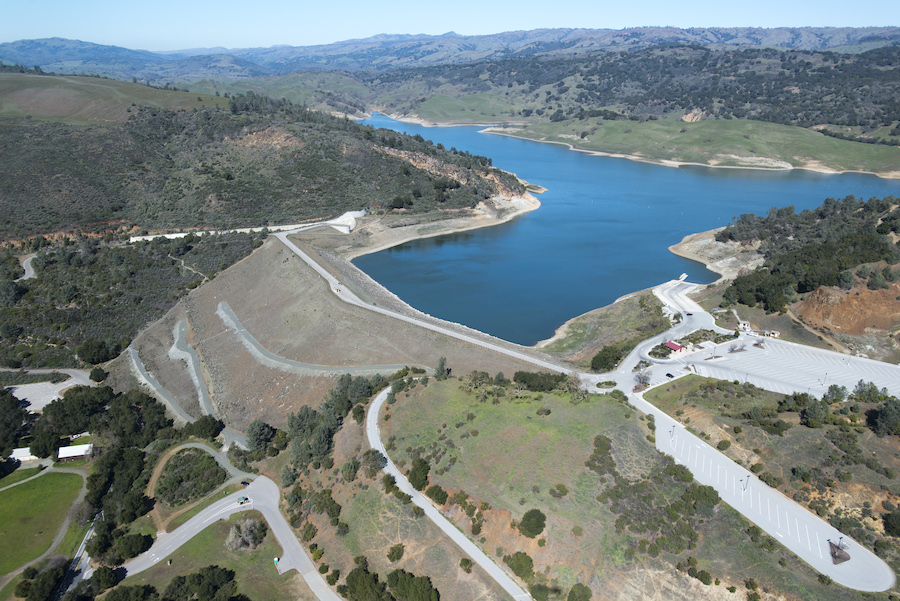Valley Water in Santa Clara, Calif., doesn’t fully agree with a Feb. 20 directive from the Federal Energy Regulatory Commission (FERC) to drain its Anderson Dam as the water district waits to begin upgrades to the structure near the Calaveras Fault.
“The demand to empty Anderson Reservoir could result in unsafe consequences,” Norma Camacho, Valley Water CEO, said in a statement. “A top concern is the potential to damage the intake structure, which would give us no way to control water flows out of the reservoir, potentially impacting downstream communities.”
FERC has directed Valley Water, which operates as a state of California special district with jurisdiction, to fully draw down the reservoir starting Oct. 1. FERC says the dam is more vulnerable to a 100-year earthquake than previously understood and there is no guarantee to the current scheduled rehabilitation. The Valley Water Board of Directors will discuss the next steps at its March 18 meeting.
The Anderson Reservoir, the largest open reservoir under Valley Water’s control, is currently limited to about 58% of its capacity due to the seismic concerns of Anderson Dam, a 240-ft-tall earthen dam.
Valley Water agrees it must draw down the reservoir before a planned $576 million-plus fix to the 1950s dam. The fix will include replacing the existing outlet pipe running below the dam to improve capacity and reliability, increasing the wall height of the concrete spillway and increasing the height of the dam crest. The project is currently in design phase.
A December 2016 finding from geotechnical and geologic investigations led Valley Water to decide on a more extensive and expensive dam retrofit than originally envisioned. Still, Valley Water hopes to break ground on the retrofit project in 2021. It has yet to request proposals from contractors.
With studies suggesting a large earthquake could damage the Anderson Dam and cause an uncontrolled water release that could impact rural areas and cities from San Francisco Bay south to Monterey Bay, including much of Silicon Valley, David Capka, director of FERC’s Division of Dam Safety and Inspections wrote in a letter to Valley Water that “it is unacceptable to maintain the reservoir,” at its current capacity. The letter also says Valley Water’s “actions to date do not demonstrate an appropriate sense of urgency regarding the interim conditions at the project.”
The agency must obtain myriad federal and state approvals for the retrofits, including from California’s Division of Safety of Dams and FERC. The project will also be overseen by an independent panel of dam experts.
“We’re currently looking at the technical aspects of reservoir operations, the hydrology, along with the regulatory requirements,” says Nina Hawk, COO of Water Utility at Valley Water. The draw down will occur, “in a safe and efficient way,” she says.
Hawk says Valley Water needs to consider a variety of factors in dewatering the reservoir, “including flow rates, environmental considerations and with an emphasis to maximize the beneficial uses of the water in this activity.”
Valley Water is also concerned about environmental impacts, including fish die-off if it cannot keep a consistent downstream flow in Coyote Creek. Water quality could also be impacted, the water district says.
In order to replenish groundwater basins currently filled by water released from the Anderson Reservoir, Valley Water is exploring other water sources that will come from outside Santa Clara County.



